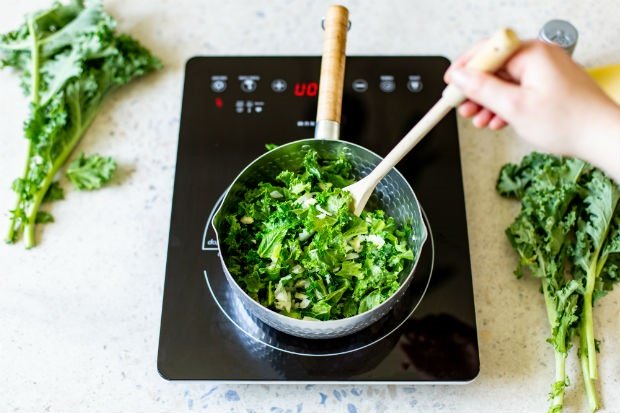South Africans love pasta; whether it’s stuffed cannelloni, filled ravioli or plain spaghetti. It can be simple and rustic or extravagant and refined. We all have our favourite family recipe but have you actually tried making it from scratch? It‘s easier than you think. A pasta machine will make light work of rolling out the dough but it’s not the be-all and end-all; in fact most Italian Nonnas will tell you that they still prefer rolling out their pasta with their trusty old rolling pins. All you need is a little patience and some gentle fingers.
History
Tortellini are the slightly fancier cousins of the more humble ravioli. They come in various shapes and sizes and the larger versions are called tortelloni. They are traditionally stuffed with meat or cheese and can be served in a clear broth, flavoured butter or sauce.
The trick
Always allow your fresh pasta dough to rest. During this time the flour absorbs the egg and in turn relaxes the gluten that was worked up during the kneading process, leaving you with a silky smooth and pliable dough that’s easy to work with.
The secret
Never rinse fresh pasta and always add a generous pinch of salt to your cooking water. By not rinsing your pasta, you keep the natural starches in tact that allows the sauce to stick to the pasta, while salting your water flavours the pasta from the outside in!
TRY THIS: Kale and ricotta tortellini in sage butter
Makes 60 (Serves 4-6)
Difficulty: a little effort
Preparation time: 2 hours + 1 hour resting time
Cooking time: 15 minutes
STEP 1
Traditional pasta dough is mixed by hand. Place 400g of cake flour on a clean surface and form a well in the centre. Crack 4 eggs into the well and use a fork to whisk it all together. Use your fingers to draw flour from the sides into the eggs and continue mixing until a dough is formed. Alternatively, the dough can be made in a food processor by adding the ingredients and pulsing until it looks like breadcrumbs. Turn the mixture out onto a clean surface and use your hands to bring it all together to form a dough. If the dough is too wet, simply add a bit more flour or add a splash of water if the dough is too dry.
STEP 2
Knead the dough with your hands by gently stretching and pulling on the dough until it becomes smooth and pliable. Form it into a disc, cover with plastic wrap and refrigerate for 1 hour. Prepare the filling by sautéing ¼ of a chopped onion and 2 crushed cloves of garlic in 15ml of olive oil over medium heat, 1 minute. Add 750ml 3 cups chopped kale and sauté, 5 minutes. Press down on the kale mixture to remove most of the liquid and spoon into a mixing bowl with a slotted spoon. Combine the kale mixture with 12 basil leaves, 180ml 200g ricotta and 125ml ½ cup grated Parmesan cheese. Pulse it in a food processor until fine and season it to taste. Allow it to cool and transfer to a piping bag fitted with a large round nozzle.
STEP 3
Turn your pasta machine to its widest setting. Divide your dough in half and cover the remaining part again. Lightly pat the dough into a rectangular shape. Lightly dust the surface and pasta machine with flour. Also dust both sides of the dough with flour and feed it through the pasta machine. Feed it through the widest setting 3 three times. Turn the pasta machine to the next setting, which is narrower, and feed the dough through three times again. Keep doing this process through each setting until you reach the 3rd or 2nd last setting of the machine. Stop once the dough is about 2mm thick. If rolling the dough out by hand, break off smaller pieces of dough to roll out manually with a rolling pin until it is the desired thickness.
STEP 4
Lay the sheet of pasta flat and cut into 6cm x 6cm squares.
STEP 5
Pipe 2.5ml (½ tsp) of filling in the centre of each pasta square.
STEP 6
Brush the edges of the dough with water and fold one half of the dough over the filling to encase it and form it into a triangle. Press the sides together with your thumb to seal.
STEP 7
Once you have the triangles formed, use your thumb to gently press the filling in the center slightly upwards to make an indent.
STEP 8
Hold the pasta triangle so that the flat side is facing you. Fold the two flaps over the filling and press them together to seal.
STEP 9
Bring a pot of salted water to the boil and boil the tortellini in batches until tender and al dente, 2-3 minutes.
STEP 10
To serve, melt 120g salted butter in a large pan over medium heat until golden brown and bubbly, 2-3 minutes. Stir in 12-16 sage leaves and 2 thinly sliced garlic cloves. Pull it off the heat and season with salt and pepper as needed. Toss the pasta through the hot butter sauce and serve topped with more grated Parmesan cheese.
ALSO SEE: Your 10 step guide to making traditional South African koeksisters

